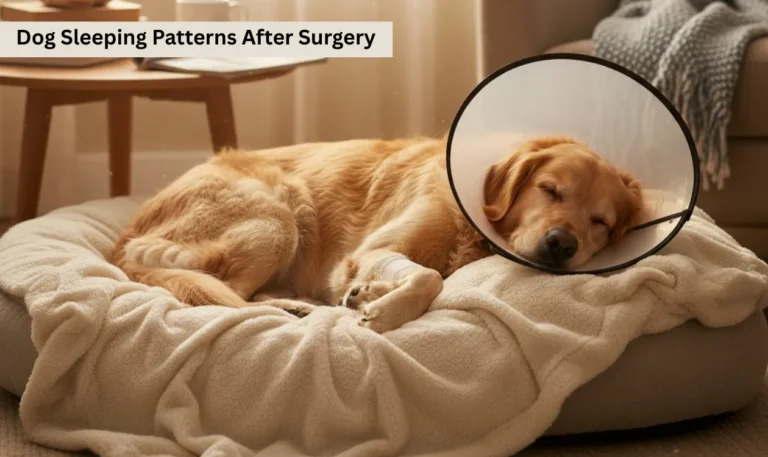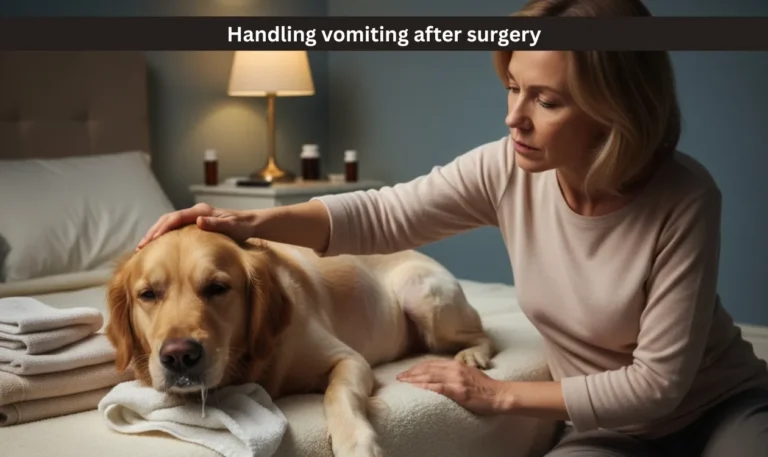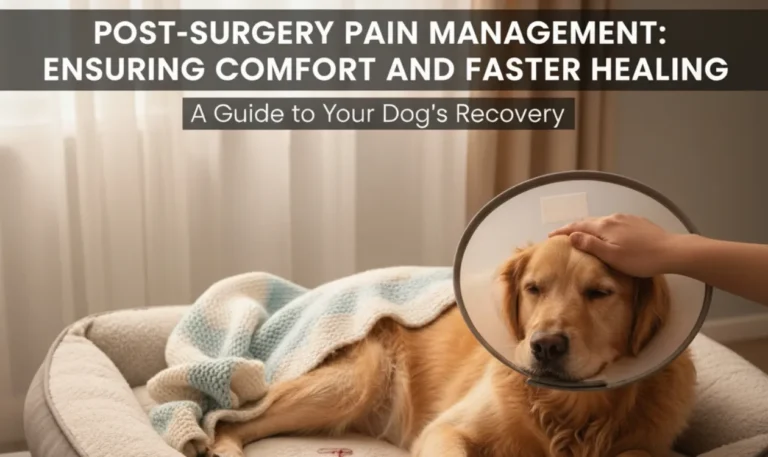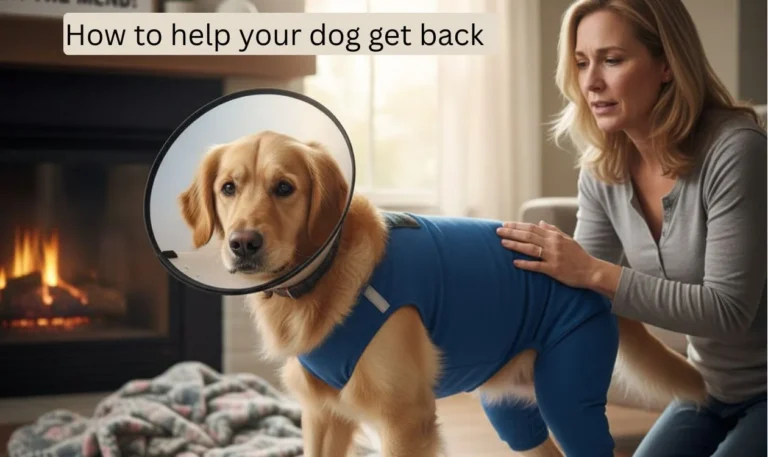How to Keep Dog from Licking Stitches Without Cone (Proven & Safe Methods)
When your dog comes home after surgery, the last thing you want is them licking or chewing at their stitches. While cones (E-collars) are the standard solution, many dogs absolutely hate them bumping into walls, refusing to eat, or simply acting miserable.
So, how can you stop your dog from licking stitches without using a cone? Let’s break down every safe, vet-approved alternative that works, along with practical recovery tips you can apply right now.
Why Dogs Lick Their Stitches
Licking is a natural dog instinct. After surgery, wounds may feel itchy, irritated, or sore. Your dog thinks licking will help but it actually makes things worse.
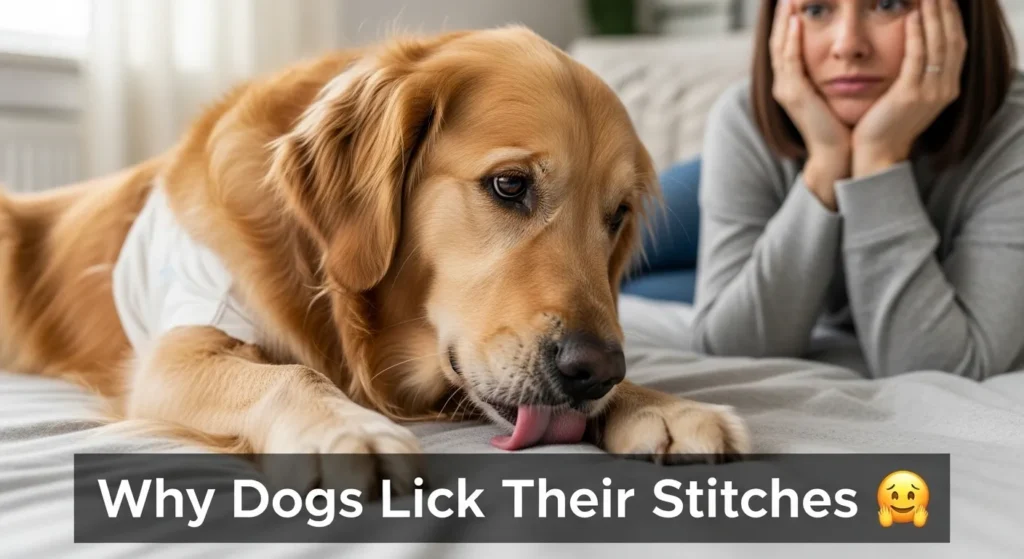
Excessive licking can:
- Reopen surgical wounds
- Introduce bacteria and cause infections
- Delay healing
- Lead to additional vet visits and costs
That’s why finding a safe, cone-free way to protect stitches is so important.
Learn More About
Why Some Dogs Can’t Tolerate Cones
Plastic E-collars are effective, but they’re uncomfortable. Common complaints include:
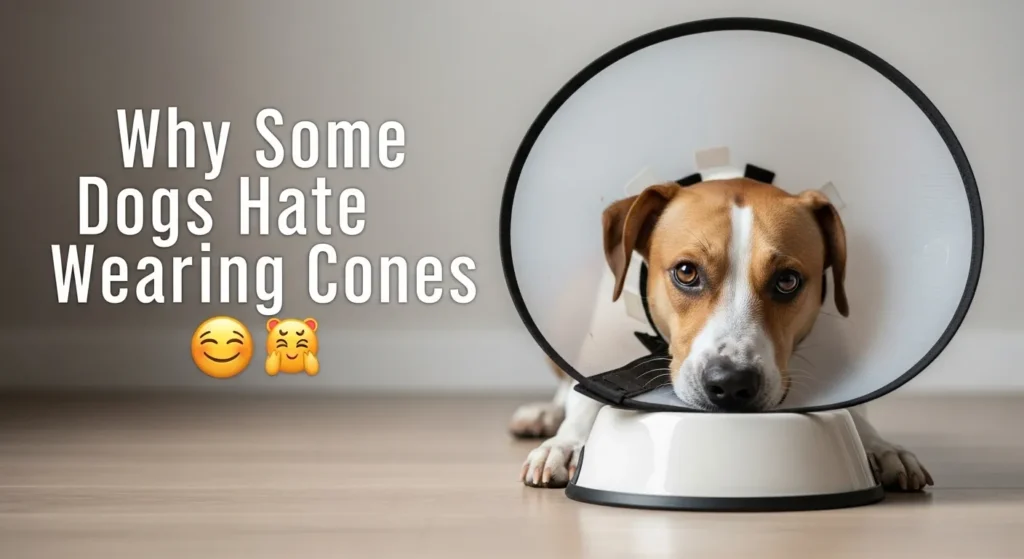
- Difficulty eating and drinking
- Fear or anxiety when wearing it
- Trouble walking or sleeping
- Frustration or whining
If your dog’s stress levels are skyrocketing, switching to a cone alternative might be the best choice.
Use a Dog Recovery Suit or T-Shirt
One of the best alternatives to a cone is a dog recovery suit — a soft, snug onesie that covers your dog’s incision.
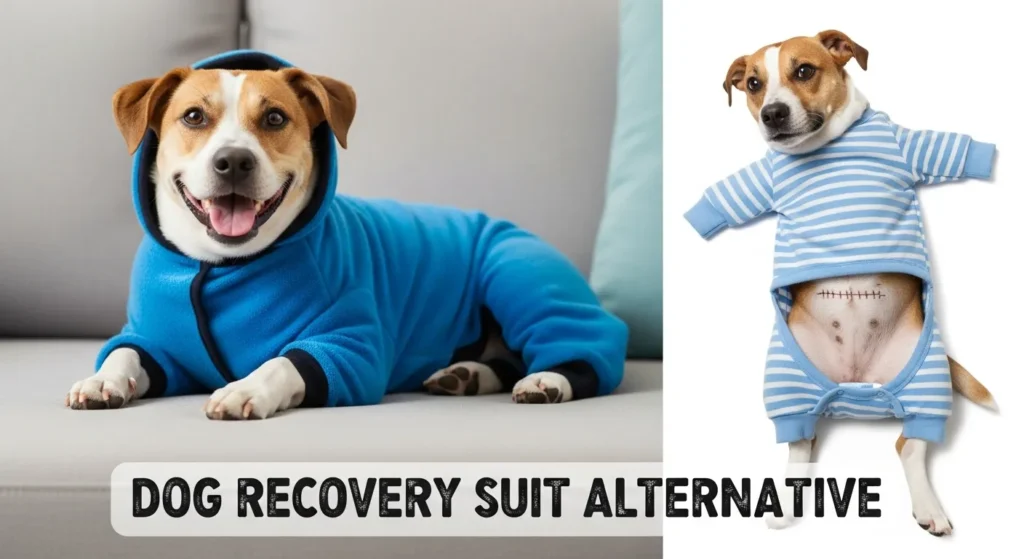
Benefits:
- Prevents licking and scratching
- Comfortable and breathable
- Allows natural movement
- Machine washable and reusable
DIY Option:
If you don’t have a recovery suit, a baby onesie or snug T-shirt can work too.
Just make sure:
- It’s not too tight or loose.
- The wound is fully covered.
- Your dog can still pee and poop comfortably.
Pro Tip: Use medical tape or clips instead of pins to avoid poking your dog’s skin.
Try an Inflatable or Soft Collar
If your dog hates hard plastic cones, try inflatable or soft E-collars. These collars act like comfy pillows around the neck, preventing your dog from bending enough to reach the stitches.

Why They Work:
- Less restrictive than traditional cones
- Comfortable for sleeping and eating
- Ideal for smaller or calmer dogs
However, note that determined dogs can sometimes reach their wounds even with these collars, especially if the incision is near the legs or tail.
Use Distraction to Your Advantage
Sometimes, the best defense is a good distraction. Dogs often lick out of boredom or anxiety. Keeping them busy redirects their focus away from the wound.
Distraction Ideas:
- Interactive toys or food puzzles
- Long-lasting chew toys (only if safe for the mouth area)
- Short, gentle walks (once your vet approves)
- Extra affection and calm playtime
Mental stimulation reduces stress and helps your dog feel normal during recovery.
Apply a Bitter-Tasting Deterrent Spray
Vet-approved anti-lick sprays are designed to taste bad, discouraging your dog from licking or chewing the area.
Common Options:
- Bitter Apple Spray
- NaturVet Bitter Yuck!
- Grannick’s Bitter Spray
Usage Tips:
- Apply around (not directly on) the wound
- Patch test first to check for irritation
- Reapply every few hours as needed
Always consult your vet before applying any product directly near stitches — especially open or healing wounds.
Bandages and Wraps (Under Vet Guidance)
If the incision is on a leg or paw, bandaging can help protect the wound. But here’s the catch bandages can trap moisture or restrict airflow if not applied correctly. Always ask your vet to show you the proper method.

Pro Tip:
Use breathable vet wrap (like “Coban” or “Vetrap”) and check the area twice daily for signs of tightness or swelling.
Create a Calm, Controlled Environment
Dogs heal faster in a quiet, stress-free space. Too much activity or excitement can make them restless and more likely to lick their stitches.
Tips for a Healing Space:
- Limit jumping, running, or climbing stairs
- Use a soft bed in a quiet corner
- Keep other pets separate for the first few days
- Use baby gates to confine movement if needed
A peaceful environment helps both physical and emotional recovery.
Monitor Constantly and Intervene Early
Even with precautions, dogs can get sneaky. Regular supervision is key during the first two weeks after surgery.
Check the incision twice daily for:
- Redness
- Swelling
- Bleeding
- Discharge
- Licking marks
If you see any of these signs or if your dog reopens the wound contact your vet immediately.
Neck Control Collars or Recovery Braces
Neck brace-style collars, often used for long-necked breeds, restrict head movement without covering vision or face.
These are a great option for dogs that panic with cones but still need strong protection.
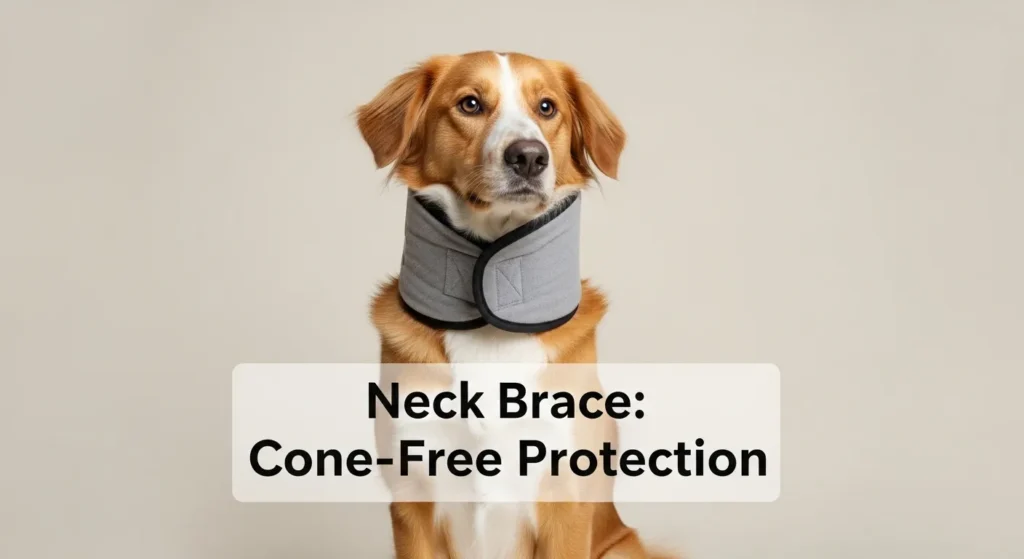
Benefits:
- Blocks head-turning motion
- Comfortable for daily use
- Doesn’t affect eating or drinking
These collars are available online or at vet clinics and are ideal for chest, belly, or flank incisions.
Maintain Hygiene Around the Incision
Dogs are drawn to anything that smells odd especially surgical sites. Keeping the incision clean and odor-free can reduce their temptation to lick.
How to Clean Safely:
- Follow vet’s instructions
- Use mild saline or vet-recommended antiseptic
- Avoid perfumed wipes or alcohol-based cleaners
Keeping fur trimmed around the area also helps reduce irritation.
Manage Pain and Itchiness
Sometimes dogs lick not out of habit — but because the wound hurts or itches. Pain management is crucial.
- Give prescribed pain meds exactly as directed.
- Never use human medications like ibuprofen or Tylenol.
- Ask your vet about anti-itch sprays if healing skin causes irritation.
When pain is under control, licking behavior often decreases naturally.
Behavior Training for Recovery
A bit of gentle behavioral correction goes a long way.
If your dog starts licking, calmly redirect them with a “No” command and offer a toy instead.
Consistency helps them understand that licking is off-limits.
Avoid yelling or punishment — it can increase stress and worsen recovery.
Nighttime Care Tips
Dogs often lick more when you’re asleep. Prevent nighttime trouble by taking a few extra steps:
- Keep your dog close to your bed or in a crate
- Make sure they’re comfortable and calm before sleeping
- Use mild background noise to help them relax
- Check the incision right before bed and first thing in the morning
When to Call Your Vet
If your dog keeps targeting the incision despite every precaution, call your vet. You might need additional support or a professional dressing.
Seek help immediately if you notice:
- Excessive redness or heat
- Pus or bad odor
- Open stitches or bleeding
- Constant licking despite deterrents
Prompt attention prevents infections or the need for repeat surgery.
How Long Should You Prevent Licking?
Most stitches take 10–14 days to heal externally.
Internal healing can continue for up to 4 weeks.
Keep all protective methods in place until your vet gives the green light — even if the incision looks normal.
Vet-Approved Cone Alternatives Summary
| Method | Best For | Pros | Cons |
|---|---|---|---|
| Recovery Suit / Shirt | Belly or body incisions | Comfortable, washable | Not for leg wounds |
| Inflatable Collar | Calm or small dogs | Soft, allows eating | Determined dogs may bypass |
| Bitter Spray | Minor deterrence | Easy to apply | Some dogs ignore taste |
| Bandage / Wrap | Leg wounds | Protects specific area | Needs vet supervision |
| Neck Brace | Neck or chest protection | High comfort | Costlier than standard cone |
Final Thoughts
Preventing your dog from licking stitches without a cone is absolutely possible — it just takes creativity, consistency, and patience. Whether you use a recovery suit, inflatable collar, or a clever distraction strategy, your main goal is to protect the incision and reduce stress.
Healing time may feel slow, but with calm care and supervision, your dog will be back to wagging their tail in no time — cone-free and completely healed.


